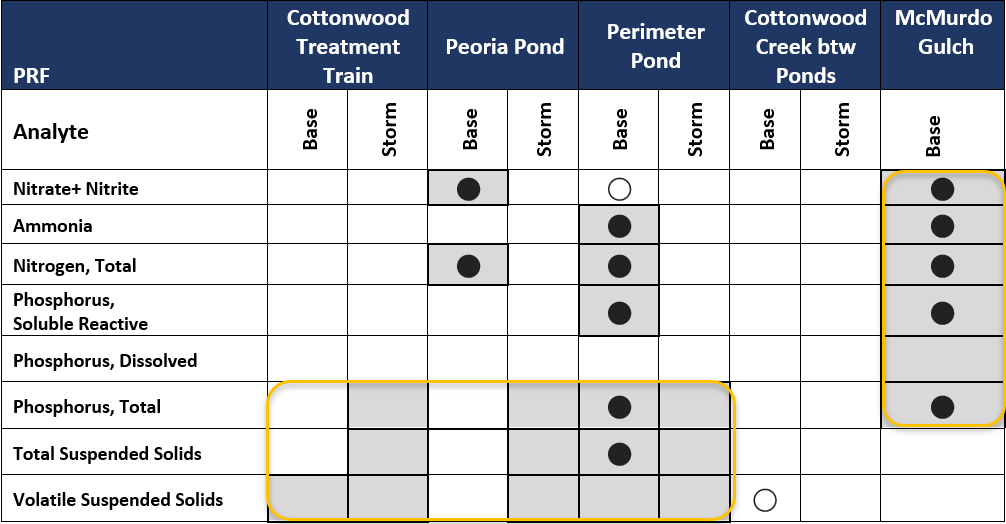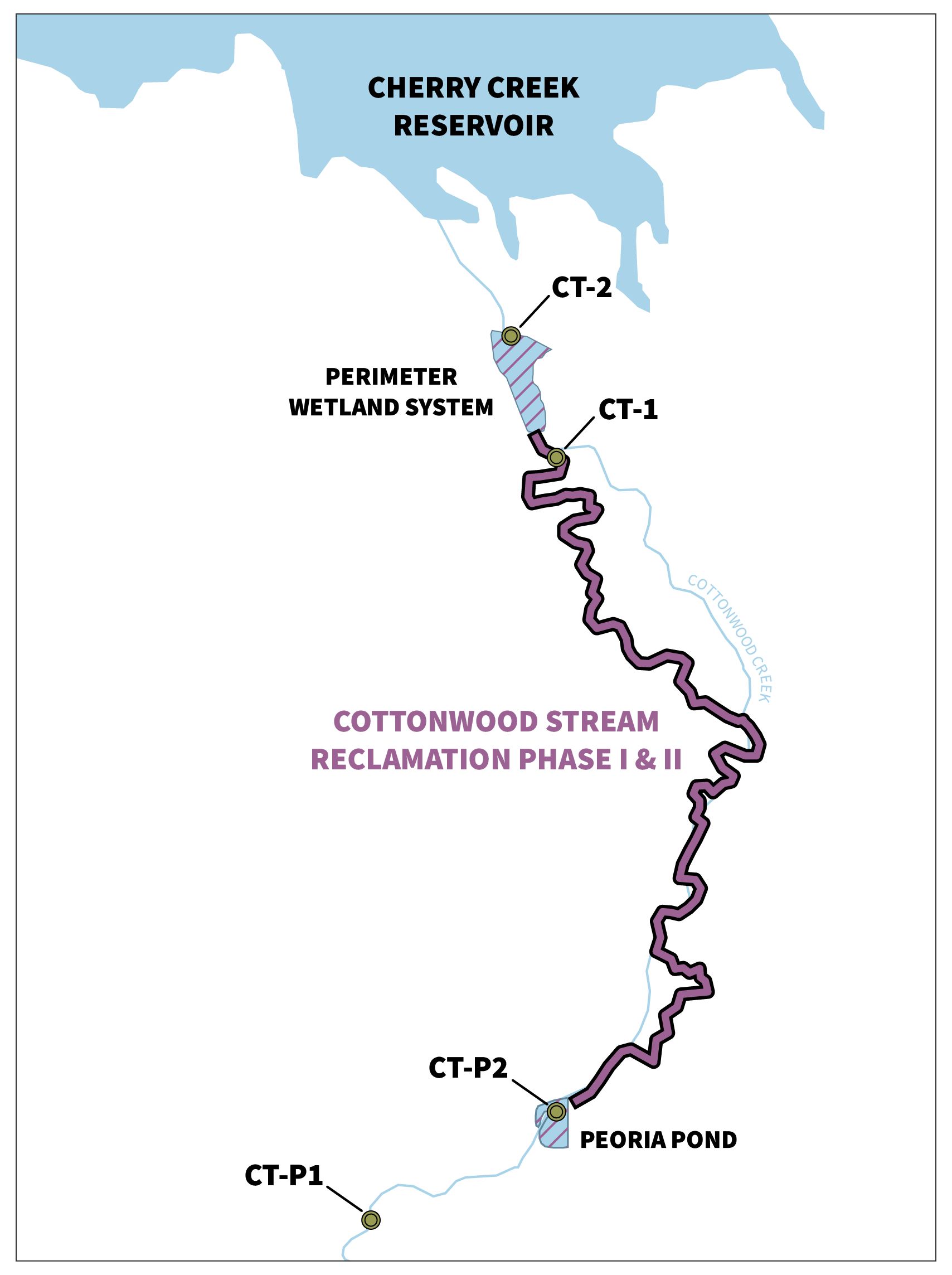PRF Monitoring
Highlights:
The PRF ponds continue to function well as designed to reduce suspended solids and phosphorus.
During 2024:
- PRF effectiveness was evaluated for significant changes over time and geospatially using the PRF statistical analysis tool available on the data portal.
- The Cottonwood Creek “treatment train” and both PRF ponds have effectively reduced phosphorus (TP) and total suspended solids (TSS) in storm flow conditions as designed for the last 10 years or more.
- The Perimeter Pond also demonstrated lower median TP and TSS concentrations downstream during base flows in WY 2024.
- All monitored nutrients were reduced upstream to downstream of the stream reclamation projects that have been completed on McMurdo Gulch.
The Cherry Creek Basin has multiple pollutant reduction facilities (PRFs) in various locations through the watershed, most notably in Cottonwood Creek. Together, stream reclamation and wetland detention systems comprise a passive treatment train approach to reduce nutrients and sediments, especially during storm events.
These PRFs are monitored on an ongoing basis to assess water quality benefits upstream to downstream annually and over time.
While the limited results from each water year are often not sufficient to complete a robust statistical analysis, annual calculations are included for reference. This analysis leverages the “PRF Statistics Tool” from the data portal to evaluate the statistical significance of changes above and below PRFs during WY 2024. During WY 2024, there were no significant trends observed up to downstream on Cottonwood Treatment Train as a whole. Since there were minimal storm samples collected, the same trends that can often be observed under storm flow, were not apparent in WY 2024.
Cottonwood Treatment Train as a whole (Peoria Pond, Phases 1 and 2 of stream reclamation completed on Cottonwood Creek downstream, and the Perimeter Pond), Peoria Pond and Perimeter Pond all showed statistically significant reductions of TP and TSS during stormflow conditions over the last 10 years. Additionally, the Perimeter Pond PRF demonstrated statistically significant reductions in median TP, TN, and TSS concentrations in baseflow conditions during the last 10 years and WY 2024.
The McMurdo Gulch upstream to downstream concentration analysis demonstrated a statistically significant reduction of all nutrients in WY 2024 and all nutrients with the exception of nitrogen, since monitoring began at those sites.
Useful Links

Summary of Significant Reductions of Nutrient and Suspended Solids Upstream to Downstream in CCBWQA PRFs, WY 2024 and 2015-2024*

Cottonwood Creek Pollutant Reduction Facilities

